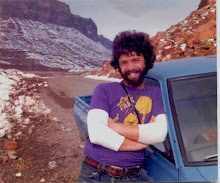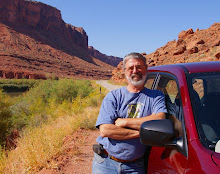 Christmas was the one holiday that loomed large in our family whether it was spent at home in a plethora of package ripping or at the big Greek feast at Nany’s house in San Francisco. Either way, the holiday memories are indelibly imprinted in my mind…for good or ill.
Christmas was the one holiday that loomed large in our family whether it was spent at home in a plethora of package ripping or at the big Greek feast at Nany’s house in San Francisco. Either way, the holiday memories are indelibly imprinted in my mind…for good or ill. The first Christmas I can remember was when I was six years old, living in San Francisco, and our family was privileged to get an in-person visit from a swarthy Santa Claus who looked suspiciously like my Uncle John. I bought into it though and got one of the few childhood gifts that I still have, a black bakelite Viewmaster. Another memorable yuletide occurred three years later. The family had moved down to the Peninsula by then, to the sunny climes of the South Bay. I awoke Christmas morn to find a miniature Fort Apache set under the tree, complete with plastic log walls, bunkhouse, and figures of Rusty and Rin Tin Tin.
Later Christmases were less consistent in delivering the emotional highs. In 1969 I was a student at San Francisco State, living with three other guys in a small house on 38th Avenue. Dissension had split our ranks by the time December had rolled around and the negativity was palpable. Nevertheless, Stan and I furtively drove up to Skyline Boulevard one cold, dark night and cut a scraggly redwood sapling to cheer the house up a bit. To little avail, as it turned out. The following month we all split up and moved out.
In the winter of 1975 I was living in a trailer in the Needles District of Canyonlands National Park in Utah. That year I was allowed to cut down a local pinyon pine for my tree. On Christmas Day, because of my low seniority, I was the only ranger on duty. All the rest were in Moab with their families. I got up in the morning, donned my NPS shirt, raised the flag at the contact station, patrolled an empty campground, and felt like I was the last man on earth.
Seven Christmases later I was cradling my nine-day old daughter Alison in a garret above the Olema Store in the rainy, rolling hills of the Point Reyes peninsula. Five years after that I was alone and lonely in Phoenix, Arizona.
Amy and I spent Christmas of 1996 carrying our ten-week old daughter Lindsay amid the luminarias and the aromas of posole and hot chocolate in the Old Town section of Albuquerque, New Mexico. Three years later, the three of us huddled around a small tree in the one furnished room of our newly acquired home in Las Vegas, Nevada, still adjusting to the new surroundings.
The last ten yuletide seasons have been spent in Colorado, sometimes with snow, sometimes without. All of them have been filled with warmth, love and a sense of fond ritual. But I always remember the other Christmases in other places in other times of my life. The highest highs and, sometimes, the lowest lows. If I could get just one of them back, it would be that morning I discovered the Fort Apache set on our living room floor and felt the innocence and wonder that only an untested child can know.





























